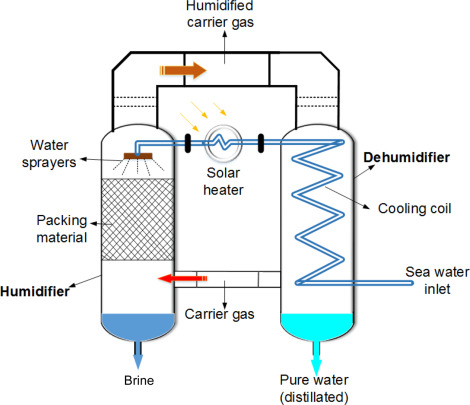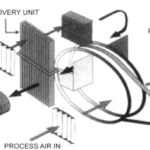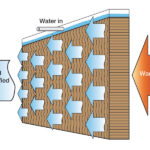Heating and Dehumidification, also referred to as “chemical dehydration” is seeing increasing use in modern air-conditioning particularly in industrial environment. When air is brought into contact with a desiccant or sorption material the water vapor molecules will be adsorbed and the air will become “drier”. As this occurs, the heat of condensation will enter the air stream, thereby increasing its temperature. The process is essentially adiabatic or isenthalpic.
Dehumidification by solid desiccants is represented on the psychrometric chart by a process of increasing dry-bulb temperature and a decreasing humidity ratio. Dehumidification by liquid desiccants is also represented by a similar line, but when internal cooling is used in the apparatus, the process air line can go from warm and moist to cool and dry on the chart.
The mechanism of desiccant dehumidification in this case is either absorption (when physical or chemical changes occur) or adsorption (when there are no physical or chemical changes).
Observable characteristics of a heating and dehumidification process are:
1. dry bulb temperature increases
2. humidity ratio decreases
3. dew point temperature decreases
4. vapor pressure decreases
5. relative humidity decreases
6. enthalpy remains essentially constant
7. wet bulb temperature remains essentially constant
Typical heating and dehumidification processes are desiccant heat wheels which can be configured for controlled dehumidification (usually dew point control) or for latent heat recovery in ventilation air streams in warm humid climates.


